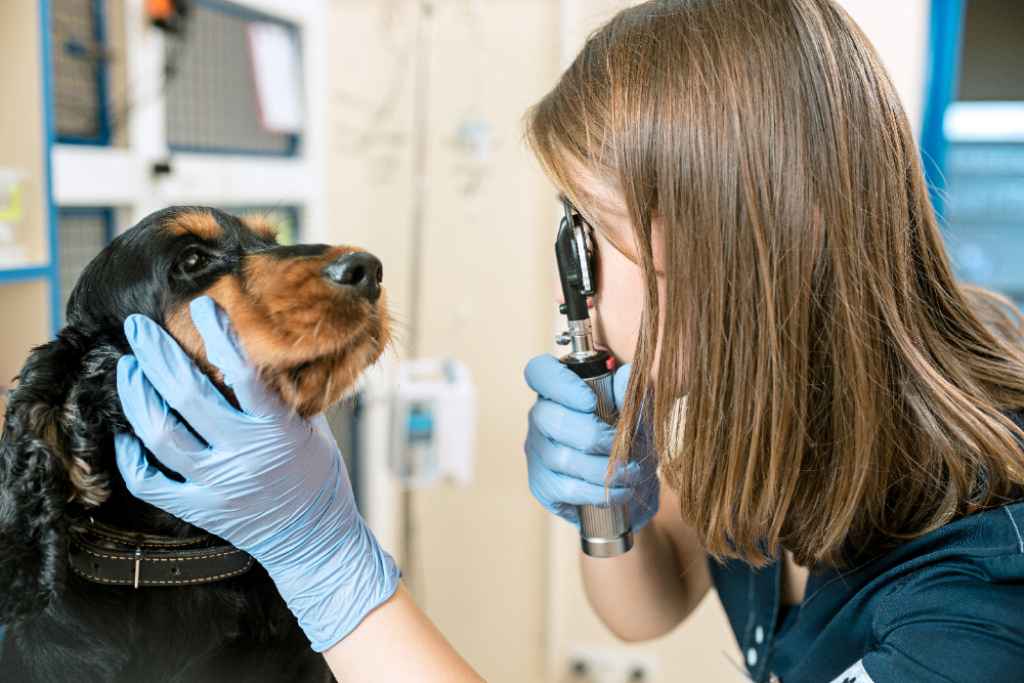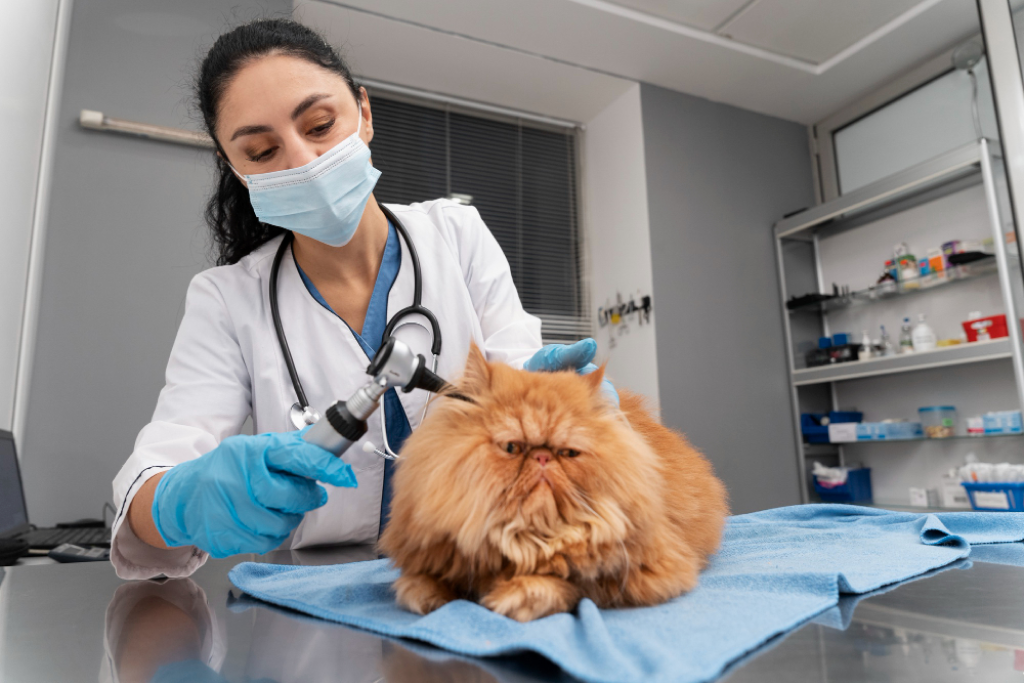What is Canine Hypothyroidism?
Canine Hypothyroidism is a disease in dogs that causes their metabolism to slow down, resulting in knock-on effects to almost all organs in the body. In this factsheet, we go over everything you need to know about Hypothyroidism in dogs, including causes, symptoms, how we diagnose the condition, and how it is treated. But first, what exactly is Hypothyroidism?
Hypothyroidism in dogs occurs when the thyroid gland (located in the neck, near the windpipe) becomes underactive and doesn’t produce enough hormones, causing the metabolism to slow down. But, with successful diagnosis and treatment, prognosis for Canine Hypothyroidism is excellent; dogs can live a long, happy life without symptoms once medication starts to take effect, usually within 3 months.
Which Breeds are Affected?
Although the exact cause of Canine Hypothyroidism can be difficult to determine, it is thought that the condition is hereditary. The following breeds tend to be at a higher risk of developing Hypothyroidism:
- Dobermann
- Golden Retrievers
- Boxers
- Great Danes
- Old English Sheep Dogs
Causes of Canine Hypothyroidism
Lymphocytic Thyroiditis or Idiopathic Thyroid Gland Atrophy accounts for 95% of Hypothyroidism in dogs, with the former being the most common cause. It is thought to be an immune system-mediated disease, meaning that the dog’s immune system considers the thyroid to be abnormal or foreign, and attacks it. It is not understood why this happens.
Canine Hypothyroidism Symptoms
The symptoms of Hypothyroidism are present in almost every organ of the body due to the slowed down metabolic rate, however, the symptoms usually develop gradually, and can at times be vague.
- Unexplained weight gain or difficulty losing weight (without an increased appetite)
- Alopecia on the neck and sides
- Rat tail (fur loss on the tail)
- Lethargy
- Dry, flaky skin (dandruff)
- Skin infections
- Thick skin around the face
- Feeling abnormally cold (shivering may be noticeable)
- Slow heart rate
- High cholesterol
- Some dogs may develop a change in bark or rasping on panting due to Laryngeal paralysis.
Canine Hypothyroidism Diagnosis
Canine Hypothyroidism is diagnosed using blood tests that check the levels of the Thyroxin in the blood (Total Thyroxin Level/TT4). Low levels of Thyroxin, alongside clinical symptoms is indicative of Canine Hypothyroidism. However, a definitive diagnosis will then be sought by performing a check of the level of thyroid stimulating hormone (TSH) as usually this is high as the brain is telling the thyroid gland to make more thyroxine, sometimes additional tests such as a free T4 by Equilibrium Dialysis (T4ED), or a thyroid panel are also required.
Your vet may also perform a general health examination to rule out other causes that can cause a drop in thyroid levels.
Treatment for Hypothyroidism in Dogs
Hypothyroidism cannot be cured, but can be easily treated and managed with thyroid replacement hormones. A oral synthetic thyroid hormone replacement called levothyroxine is commonly prescribed for this, and must be given for the rest of the dog’s life.
All dogs are started on a standard dose of the hormone, based on the dog’s weight. After a month of treatment, blood tests are taken to verify that the treatment is working, and that hormone levels have returned to normal. If hormone levels have not returned to normal, or if levels are too high, the dosage may be adjusted to suit. From here, thyroid hormone levels may be periodically tested to ensure the right dosage.
Veterinary Dermatology at Knutsford Vets
At Knutsford Vets, we offer a range of veterinary dermatology services to help diagnose and treat your pet’s skin conditions. Our friendly team will work with you to get to the bottom of the problem before providing suitable recommendations and treatment options to help get your pet back to good health.
Experience honest, tailored care. Book online today.








